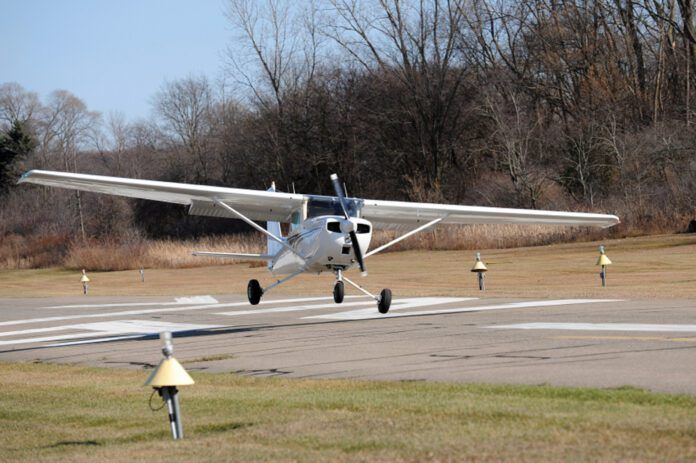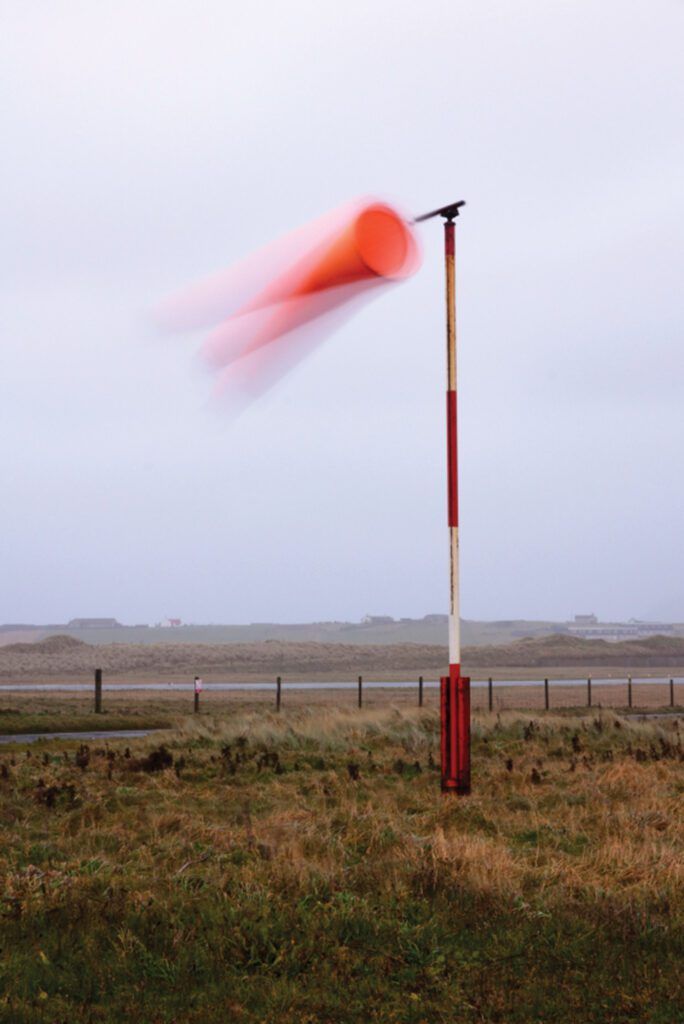
Between several weeks of downtime at the avionics shop and a bunch of personal distractions, my piloting skills had accumulated a layer of rust by the end of 2023. By then, what I and a few million of my closest friends had hoped would be a dry and benign Florida winter turned soggy, overcast and windy. It was okay weather if you wanted to climb to altitude and go somewhere—especially somewhere downwind with better weather—but the kind of flying I needed wasn’t the straight-and-level-in-cruise kind. Instead, I drastically needed some basic pattern work, along with a few more approaches, all of which, of course, is done down low. It took a while for the weather gods and my schedule to agree, but I finally managed to remove some of the rust I’d accumulated.
I didn’t really have any problems flying the airplane; I just wasn’t as elegant as I wanted to be. My landings, normally featuring relatively smooth tire chirps, now more closely resembled standing a one-inch-thick steel plate on edge and letting it drop onto a concrete driveway. The problem was especially acute if there was a crosswind, which there seemingly was for weeks, and if it was gusty, which it also was for weeks. It took me a few tries, but I finally cracked the code that was keeping me from executing the landing technique I had come to expect (which shouldn’t be confused with a “good” technique).
Environmental Factors
My home-base runway is a rather narrow, 2500-foot-long piece of pavement bordered on all sides by an assortment of trees and structures. It’s fine 99 percent of the time. The one percent is when there’s a stiff, gusty crosswind. (It’s an old joke, but the runway construction crew must have studied the site’s winds and found them to be out of the north half the time and out of the south the other half. So, naturally, the crew split the difference and aligned the runway east/west.)
I’m no stranger to crosswinds, having “grown-up” at an airport with three runways laid out in a triangle, where you easily could find a 60-degree crosswind to practice landings. So I couldn’t figure out what my problem was. Of one thing I was sure: to spare me some embarrassment, I wanted to practice my landings where everyone didn’t know my name, at an outlying airport. Which I did, but the low-level turbulence, plus construction-related runway and taxiway closures, really cramped my style.
And I wasn’t getting any better at it, either. It wasn’t fun, like it used to be. I was frustrated and angry with myself.
But then, one morning, it all came together when landing back at home plate. Chirp. Chirp. Chirp. I had figured it out.
Keys To Crosswinds
In fact, all other things being equal, landing in a steady-state crosswind shouldn’t be that much of a challenge. Since the wind pushes the airplane downwind, we have to compensate. When well above the runway, one way to compensate is to “crab”—turn the airplane into the wind so that the course being flown and the crosswind cancel each other out and we can track the runway centerline. It’s when we’re close to the runway that things get interesting.
Typically, part of the technique is to bank the airplane into the wind with aileron. The bank tends to turn the airplane into the wind, which is less than desirable when the wind isn’t aligned with the runway. To counter that turning tendency, opposite rudder must be employed to stay on the runway centerline. The result should be an attitude resembling the Cessna 150’s in the image above, known as a sideslip.
 A New Attitude
A New Attitude
The FAA’s Airplane Flying Handbook (FAA-H-8083-3C) says, “In a sideslip, the airplane’s longitudinal axis remains parallel to the original flightpath, but the airplane no longer flies straight ahead. Instead, the horizontal component of lift forces the airplane also to move somewhat sideways toward the low wing. The amount of slip, and therefore the rate of sideward movement, is determined by the bank angle…. As bank angle is increased, additional opposite rudder is required to prevent turning.”
With a steady-state crosswind, the challenges can include a) recognizing the crosswind’s direction and strength, b) establishing the appropriate bank angle and c) applying rudder to maintain longitudinal alignment with the runway. If a crab into the wind is used well above the runway, knowing when to “kick” out of the crab and enter the sideslip also is a challenge. Gusts also can present a challenge. The cure to overcoming these challenges, of course, is practice.
In my case, practice wasn’t immediately rewarding. Until, that is, my anger and frustration resulted in exerting more force on the controls, primarily the rudder. Applying almost full rudder produced the desired yaw control while the bank angle pretty much took care of itself. I lightly touched down on the upwind main gear and then the downwind, followed by the nosewheel. I had cracked the code.
Perhaps due to my familiarity with them, my previous crosswind landings sucked because I wasn’t using enough control input, again, primarily rudder. My Debonair had plenty of control authority in crosswinds—I just wasn’t using it. My familiarity with crosswinds had bred contempt for them.
The punchline? If you’re having trouble with crosswinds, respect them, but don’t be afraid to use all the control authority available. That’s what it’s there for.



